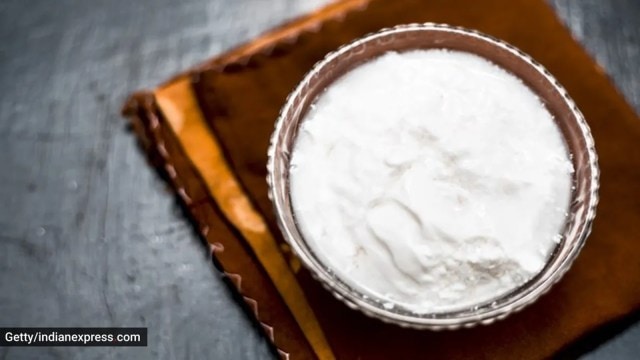📣 For more lifestyle news, click here to join our WhatsApp Channel and also follow us on Instagram
This is why you should try this homemade curd this summer season (Bonus: Tips!)
To help you make the best curd this summer for your daily nutrition needs, we reached out to MasterChef Shipra Khanna.
 Here's how to set the perfect curd (Source: Getty Images/Thinkstock)
Here's how to set the perfect curd (Source: Getty Images/Thinkstock)As the summer sets in, so does our body’s need for cooling foods that are equally tasty too. One such that many of us crave and love is curd. Instead of buying from outside, you can set your curd at home with a few easy steps. To help you make the best one this summer season for your daily nutrition needs, we reached out to MasterChef Shipra Khanna.
Before we dive into the tips, here are some of the pertinent reasons why curd should be part of your diet.
Rich in probiotics, it supports gut health, aids digestion, and may alleviate lactose intolerance symptoms. “Additionally, curd is nutrient-dense, providing protein, calcium, phosphorus, and B-vitamins essential for overall health,” said Sushma PS, chief dietitian, Jindal Naturecure Institute.
According to Sushma, incorporating curd into your diet promotes weight management, strengthens bones, and boosts the immune system, potentially reducing the severity of infections. “Its versatility allows for various culinary uses, making it a valuable addition to any balanced diet,” said Sushma.
Here are some tips and tricks for making perfect curd at home
Use fresh milk
Start with fresh, preferably whole milk for the best results. Avoid using ultrapasteurised milk as it may not be set properly.
Amount of culture
You can use a small amount of stored plain fresh yogurt as a starter/culture for the curd, said Khanna.
 Do experiment with variations (Source: Getty Images/Thinkstock)
Do experiment with variations (Source: Getty Images/Thinkstock)
Maintain perfect temperature
Curd sets best at warm temperatures, around 110°F (43°C). “You can achieve this by placing the milk in a warm spot or using a yogurt maker, an oven with a light on, or a thermos,” said Khanna.
Clean container
Preferably clay pot with a lid to prevent the growth of unwanted bacteria, said Khanna.
Give it time and be patient
The curd may take anywhere from 4 to 12 hours to set, depending on the temperature and the potency of the starter culture. Avoid disturbing it while it sets.
Check for consistency
After the incubation period, check the curd for a thick, creamy consistency. “If it’s too runny, it may need more time to set,” said Khanna.
Refrigerate after setting
Once the curd has been set to your desired consistency, refrigerate it immediately to stop the fermentation process, maintain freshness, and avoid it from getting sour.
Save some as a starter for another batch
Before enjoying your homemade curd, set aside a small portion to use as a starter for your next batch. This will ensure you always have a fresh source of active cultures.
Experiment with flavours
Don’t be afraid to experiment with different milk types (like goat or sheep milk) or add flavourings like honey, jaggery, or fruit after the curd has been set to create unique variations.
📣 For more lifestyle news, click here to join our WhatsApp Channel and also follow us on Instagram



- 01
- 02
- 03
- 04
- 05
























